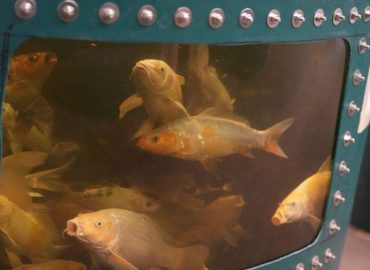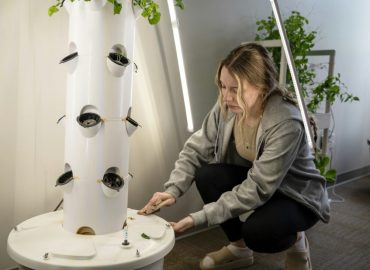Low Power Winter Greenhouse
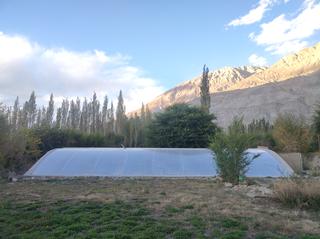
Solar indoor farming. When leafy greens grow at -17.7°C
Low Power Winter Greenhouse | Preeti Mehra |
Even as environment concerns in the Ladakh region have been in focus recently, a pilot project to grow fresh vegetables in the dead of winter in the Nubra Valley of Leh district is showing promise.
The first high altitude passive solar hydroponic greenhouse was set up in August last year at Kyagar village by Hydro-Pro, an agritech start-up, to see if fresh leafy greens could be made available to the people of Ladakh in the minus temperatures they face every winter.
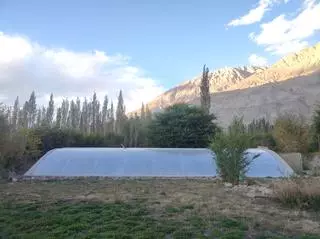
Hydro-Pro customised a special solar passive greenhouse for the purpose and collaborated with the solar powered hospitality unit — the “Lchang Nang Retreat, The House of Trees” — to grow vegetables through hydroponics. This is a technique of growing plants in receptacles using water-based nutrient solution instead of soil.
But would it work when temperature goes way below zero? The greenhouse was able to produce a steady supply of greens throughout the peak winter months of December, January and the first week of February this year. The average yield was 80 kg per month. This could have been even more if there had not been a shortage of staff.
Desired results
The project confirmed that renewable energy, in conjunction with hydroponics in this case, can grow 1,620 plants per cycle, with 4-5 cycles in a year. “Additional plants like tomato, zucchini and lemon were also planted in November and they have started fruiting. The vegetables grown and successfully harvested in the greenhouse include pak choi, spinach, lettuce, tomatoes, zucchini, lemon and even fruits like strawberry,” says Capt. Prasenjit Biswas. After retirement, the Army veteran founded the start-up to advocate for soil-free farming techniques and the use of technology for producing crops.
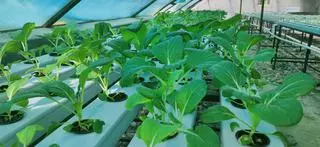
Biswas says during the months of the pilot, the lowest outside temperature had touched -17.7° Celsius, while the average day and night internal temperatures were 9.72° Celsius and 2.6° Celsius, respectively. But the greenhouse was so designed that it generated the desired results.
The ‘Ladakhi Greenhouse’ design had been perfected by the Defence Institute of High-Altitude Research, a defence lab of the Defence Research and Development Organisation, and is being offered at subsidy to the local Ladakhi population. Capt. Biswas explains how the project happened, “Although this greenhouse and previous designs have been available to the people for many years, it was never utilised to its maximum potential till now. By incorporating hydroponics in the greenhouse, we have been able to efficiently increase the number of plants which can be grown… we have also been able to increase the efficiency of the greenhouse by adapting simple passive methods.”
The innovations to the design included increasing the thermal mass inside the greenhouse; installing the nutrient reservoir below ground level; ensuring a leakproof environment inside the greenhouse; and to increase efficiency and reduce thermal loss by insulating the north wall roof with foam insulation. Climate monitoring and control systems were also installed that provide real world data about the climate inside and outside the greenhouse.
Challenges and success
The project was not a cakewalk, it had several challenges including those of farming in extreme and off grid locations. “Besides the sub-zero temperatures, the aridness of Ladakh, its accessibility, unavailability of electricity in rural and remote areas and other real-world challenges were very much there. All the materials required to setup the hydroponic system had to be sourced from outside Ladakh, adding to the input cost. The groundwater has high pH and the nutrient formulation had to be done keeping this in mind. Not having enough staff during peak winter was also a major challenge, said the Hydro-Pro founder.
The Army veteran largely attributes the success of the project to Rigzin Kalon, proprietor of Lchang Nang Retreat. “He instinctively understood the synergy between hydroponics and the Ladakhi greenhouse and the benefits from it. Being a local from the village where his resort is located, he has first-hand experience of the challenges of this region.”
Capt. Biswas also recognised the “invaluable contribution” of Rigzin’s younger brother, Tsewang Stobdan, who did all the leg work, oversaw the project and even regularly tended to the greenhouse during the formidable chilly winters.
Lchang Nang Retreat is located around 60 km en route the Siachen Base camp. “This is what makes the project special, as it showcases the remote and unforgiving climate of Ladakh during winters with extreme cold and biting winds. This part of the region is only connected by one major road, which has to navigate the Khardungla Pass, at an altitude of 17,582 ft.,” Capt. Biswas said.
He hopes the project will yield much more than a harvest. The potential is immense. Many more such greenhouses can be set up and existing Ladakhi Greenhouses can be upgraded to a hydroponic system with ease if the government steps in to subsidise hydroponic equipment as well. The project is also a showcase for attaining food security in remote regions through an alternative method to traditional agriculture.
Orignal Article: https://www.thehindubusinessline.com/specials/clean-tech/when-leafy-greens-grow-at-177-c/article66571589.ece
The post Low Power Winter Greenhouse appeared first on GROZINE.


